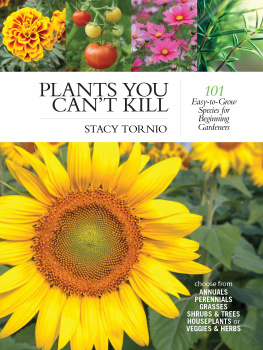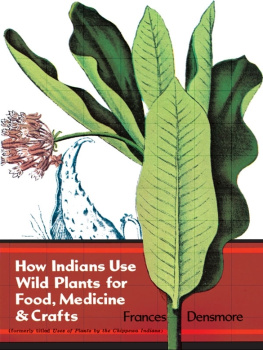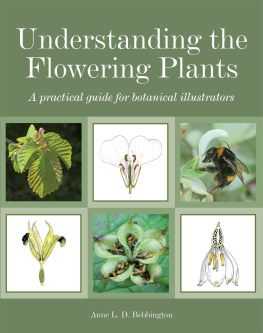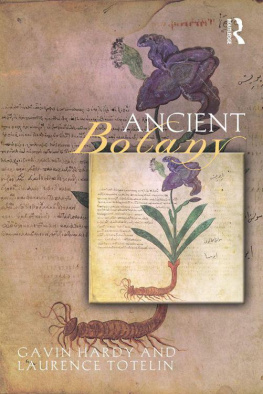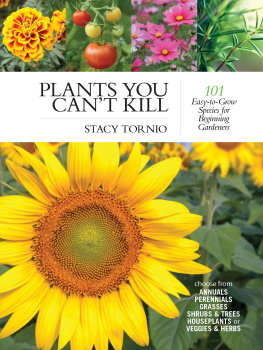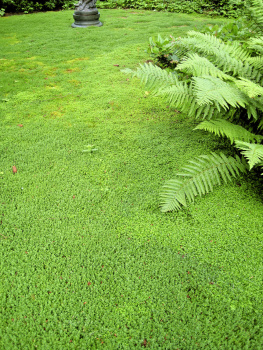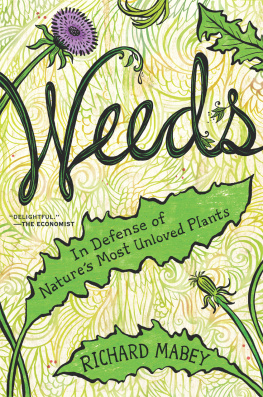WICKED PLANTS
ALSO BY AMY STEWART
From the Ground Up: The Story of a First Garden
The Earth Moved: On the Remarkable
Achievements of Earthworms
Flower Confidential: The Good, the Bad,
and the Beautiful in the Business of Flowers
Wicked Plants
THE WEED THAT KILLED LINCOLNS MOTHER & OTHER BOTANICAL ATROCITIES
Amy Stewart
ETCHINGS BY BRIONY MORROW-CRIBBS
ILLUSTRATIONS BY JONATHON ROSEN

Published by
ALGONQUIN BOOKS OF CHAPEL HILL
Post Office Box 2225
Chapel Hill, North Carolina 27515-2225
a division of
WORKMAN PUBLISHING
225 Varick Street
New York, New York 10014
2009 by Amy Stewart. All rights reserved.
Printed in the United States of America.
Published simultaneously in Canada by Thomas Allen & Son Limited.
Design by Anne Winslow, with thanks to Jean-Marc Troadec.
Library of Congress Cataloging-in-Publication Data
Stewart, Amy.
Wicked plants : the weed that killed Lincolns mother and other botanical atrocities / by Amy Stewart; with etchings by Briony Morrow-Cribbs and illustrations by Jonathon Rosen.1st ed.
p. cm.
Includes bibliographical references.
ISBN-13: 978-1-56512-683-1
1. Poisonous plants. 2. Dangerous plants. I. Morrow-Cribbs, Briony.
II. Rosen, Jonathon. III. Title.
QK100.A1S74 2009
581.65dc22 2009006192
10 9 8 7 6 5 4 3 2
To PSB

Would not the earth, quickened to an evil purpose by the sympathy of his eye, greet him with poisonous shrubs... Would he not suddenly sink into the earth, leaving a barren and blasted spot, where, in due course of time, would be seen deadly nightshade, dogwood, henbane, and whatever else of vegetable wickedness the climate could produce, all flourishing with hideous luxuriance?
Nathaniel Hawthorne, The Scarlet Letter
CONTENTS
INTRODUCTION
Consider Yourself Warned
A tree sheds poison daggers; a glistening red seed stops the heart; a shrub causes intolerable pain; a vine intoxicates; a leaf triggers a war. Within the plant kingdom lurk unfathomable evils.
In his 1844 story Rappaccinis Daughter, Nathaniel Hawthorne described an elderly doctor who tended a mysterious walled garden of poisonous plants. The old mans demeanor in the presence of his shrubs and vines was that of one walking among malignant influences, such as savage beasts, or deadly snakes, or evil spirits, which, should he allow them one moment of license, would wreak upon him some terrible fatality. The storys hero, young Giovanni, watched from a window and found it most disturbing to see this air of insecurity in a person cultivating a garden, that most simple and innocent of human toils.
Innocent? This is how Giovanni viewed the luxuriant vegetation below his window, and it is how most of us approach our gardens and the plants we encounter in the wild: with a kind of nave trust. We would never pick up a discarded coffee cup from the sidewalk and drink from it, but on a hike well nibble unfamiliar berries as if they had been placed there for our appetites alone. Well brew a medicinal tea from unrecognizable bark and leaves that a friend passes along, assuming that anything natural must be safe. And when a baby comes home, we rush to add safety caps to electrical outlets but ignore the houseplant in the kitchen and the shrub by the front doorthis in spite of the fact that 3,900 people are injured annually by electrical outlets while 68,847 are poisoned by plants.
You can garden for years without ever suffering the ill effects of a plant like monkshood, whose cheerful blue flowers conceal a toxin that brings on death by asphyxiation. You can hike for miles and never encounter the coyotillo shrub, whose berries cause a slow but deadly paralysis. But someday the plant kingdoms dark side may make itself known to you. When it does, you should be prepared.
I DIDNT WRITE this book to scare people away from the outdoors. Quite the opposite is true. I think that we all benefit from spending more time in naturebut we should also understand its power. I live on the rugged northern California coast, and every summer the Pacific Ocean sneaks up behind a family enjoying a day at the beach and claims a life. Those of us who live here know that so-called sleeper waves can kill with no warning. I love the ocean, but I never turn my back on it. Plants deserve the same kind of guarded respect. They can nourish and heal, but they can also destroy.
Some of the plants in this book have quite a scandalous history. A weed killed Abraham Lincolns mother. A shrub nearly blinded Frederick Law Olmsted, Americas most famous landscape architect. A flowering bulb sickened members of the Lewis and Clark expedition. Poison hemlock killed Socrates, and the most wicked weed of alltobaccohas claimed ninety million lives. A stimulating little bush in Colombia and Bolivia called Erythroxylum coca has fueled a global drug war, and hellebore was used by the ancient Greeks in one of the earliest instances of chemical warfare.
Plants that are monstrously ill mannered deserve recognition, too: kudzu has devoured cars and buildings in the American South, and a seaweed known as killer algae escaped from Jacques Cousteaus aquarium in Monaco and continues to smother ocean floors around the world. The horrid corpse flower reeks of dead bodies; the carnivorous Nepenthes truncata can devour a mouse; and the whistling thorn acacia harbors an army of aggressive ants that attack anyone who comes near the tree. Even a few interlopers from outside the plant kingdomhallucinogenic mushrooms, toxic algaemerit inclusion here for their wicked ways.
If this book entertains, alarms, and enlightens you, Ive done my job. Im not a botanist or a scientist but rather a writer and a gardener who is fascinated by the natural world. These are the most fascinating and evil plants from among thousands that grow around the world. If youre in the market for a comprehensive poisonous plant identification guide, Ive included a special section for you in the bibliography. And if you suspect that someone has been poisoned by a plant, please do not spend precious time flipping through this book in search of symptoms or a diagnosis. While I describe the possible or probable effects of many toxins, their potency can vary widely depending on the plants size, the time of day, the temperature, the part of the plant in question, and how it was ingested. Dont try to figure it out on your own. Instead, call a poison control center at (800) 222-1222, or seek immediate medical attention.
Finally, do not experiment with unfamiliar plants or take a plants power lightly. Wear gloves in the garden; think twice before swallowing a berry on the trail or throwing a root into the stew pot. If you have small children, teach them not to put plants in their mouths. If you have pets, remove the temptation of poisonous plants from their environment. The nursery industry is woefully lax about identifying poisonous plants; let your garden center know that youd like to see sensible, accurate labeling of plants that could harm you. Use reliable sources to identify poisonous, medicinal, and edible plants. (A great deal of misinformation circulates on the Internet, with tragic consequences.) I did not shy away from including plants that intoxicate, but I included them to provide a warning, not an endorsement.
Next page


